Wildlife Wednesday: Life Under a Log
One of the most popular activities we do with kids (and adults), in classes and on nature hikes, at the Nature Center is rolling over logs and rocks to see what creatures may dwell underneath. This week, we thought we’d have a closer look at 3 of the creatures we encounter out in the park and under logs, and consequently, creatures you may see in your own yard and garden.
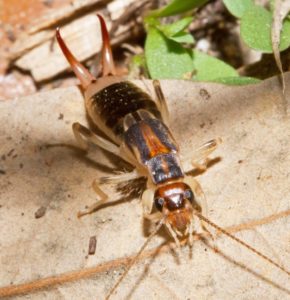 Earwigs (order Dermaptera) are very common little insects, but are somewhat misunderstood. The common name comes from an old and common belief that earwigs crawl into people’s ears… this is not the case! Earwigs live in a variety of natural settings, and occasionally wander into our houses. They are nocturnal and omnivorous (feeding on a wide variety of small invertebrates and plant matter). Because of the pincers on the tail end, they are often misidentified as centipedes, which are not insects, and have longer bodies and many more than 6 legs. The pincers are used to seize prey and defend themselves from each other and other small predators.
Earwigs (order Dermaptera) are very common little insects, but are somewhat misunderstood. The common name comes from an old and common belief that earwigs crawl into people’s ears… this is not the case! Earwigs live in a variety of natural settings, and occasionally wander into our houses. They are nocturnal and omnivorous (feeding on a wide variety of small invertebrates and plant matter). Because of the pincers on the tail end, they are often misidentified as centipedes, which are not insects, and have longer bodies and many more than 6 legs. The pincers are used to seize prey and defend themselves from each other and other small predators.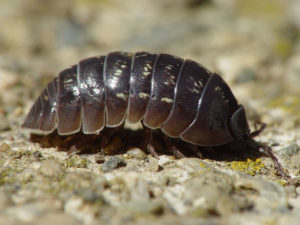
Roly Polys (order Isopoda) also called woodlice, isopods. pill bugs, and sow bugs, are not insects, as some people would suppose, but are in fact terrestrial crustaceans (the group of animals that lobsters and crabs are in). Most species of isopods live in the ocean, but a group of them, that we call roly polys and pill bugs, have adapted nicely to various habitats on the land. These animals are detritivores (feeding on dead plants materials). They lose water easily, and therefore are usually most active at night.
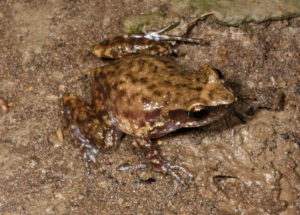
Rio Grande Chirping Frogs (Eleutherodactylus cystignathoides campi) are more commonly heard around Houston, than they are seen. The males of these tiny brown frogs can often be heard emitting their chirp like squeaks on warm summer nights, especially after a rain. These frogs undergo do not need standing water to lay their eggs, and are fine laying them in damp places like flowerpots and under rocks and logs. The tadpoles stay in the egg, and hatch out as full formed tiny froglets. Rio Grande Chirping Frogs are native to Rio Grande Valley of Northern Mexico and far South Texas, and were introduced to the Houston and the Gulf Coast of Texas unintentionally in flower pots brought up from that region.
Well, those are just a few of the small animals we encounter all the time during hikes through the park, turning over rocks and logs. We hope you recognized a few of them from your own yard, and learned something new. Come out to the park some time, and join us on a guided nature hike to look for some of them in person.
Thanks for join us. See you soon!
Eric Duran
Staff Naturalist
photographs: Top earwig – fir0002 | Wikipedia; earwig – InsectsUnlocked | Flickr; Roly Poly by Franco Folini | Wikipedia; Chirping frog by Matthew Niemiller | EOL


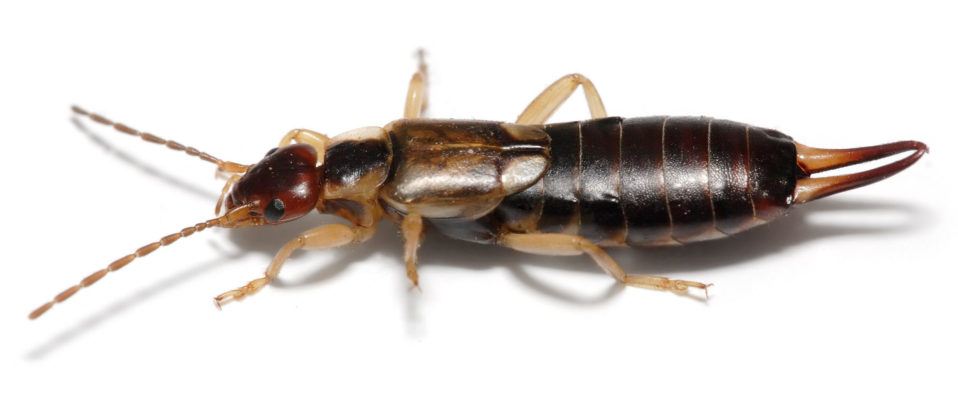
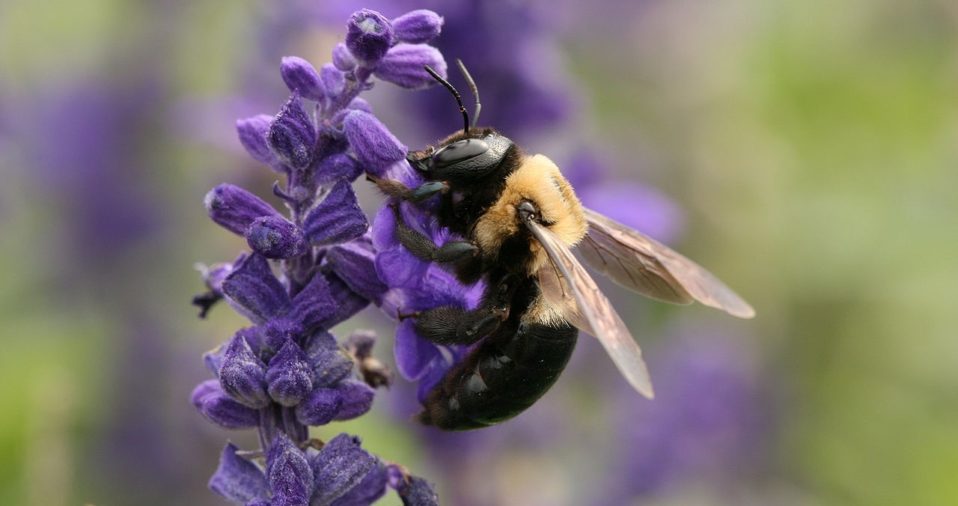
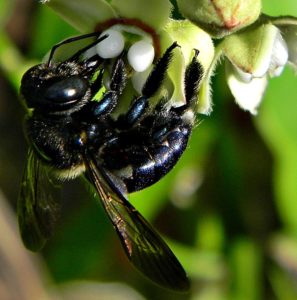

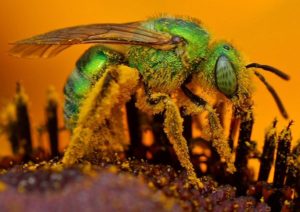

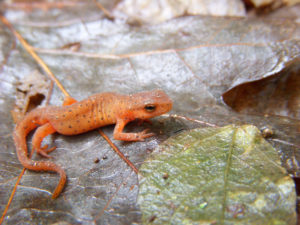
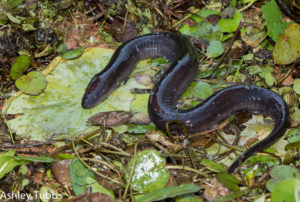
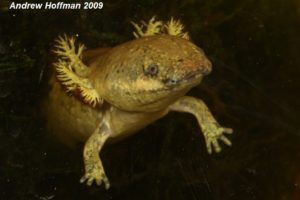 Another fully aquatic eel-like salamander is the Lesser Siren (Siren intermedia), which grow to about 18 inches in length. They have 2 tiny front legs, no back legs, and a flattened paddle-like tail. Sirens are easily identified by their feathery gray and red external gills, which extend from the sides of the head. Much like the amphiuma, they are very carnivorous and can deliver a painful and bloody bite. However, instead of a sharp bony ridge, they have a sharp horny beak-like structure. Also similar to amphiumas, they have extremely smooth slimy skin. Both sirens and amphiumas are believed to guard their eggs in mud nests under the water or in burrows next to their ponds, lakes, and bayous.
Another fully aquatic eel-like salamander is the Lesser Siren (Siren intermedia), which grow to about 18 inches in length. They have 2 tiny front legs, no back legs, and a flattened paddle-like tail. Sirens are easily identified by their feathery gray and red external gills, which extend from the sides of the head. Much like the amphiuma, they are very carnivorous and can deliver a painful and bloody bite. However, instead of a sharp bony ridge, they have a sharp horny beak-like structure. Also similar to amphiumas, they have extremely smooth slimy skin. Both sirens and amphiumas are believed to guard their eggs in mud nests under the water or in burrows next to their ponds, lakes, and bayous.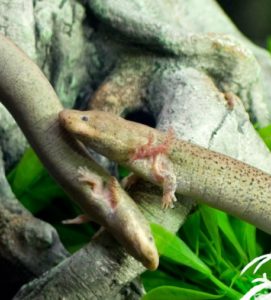
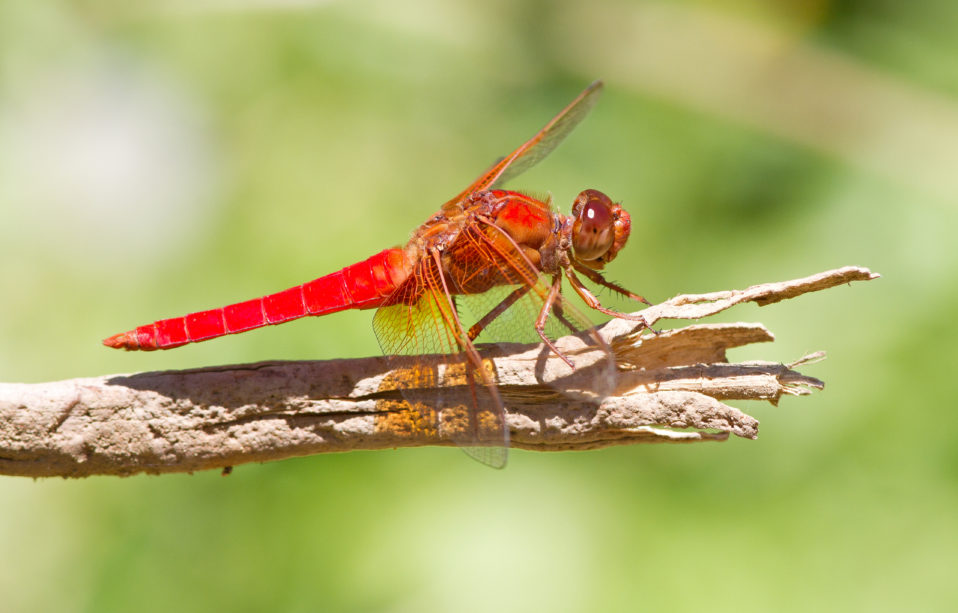
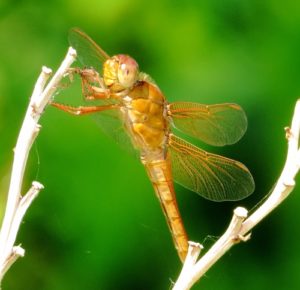 The
The 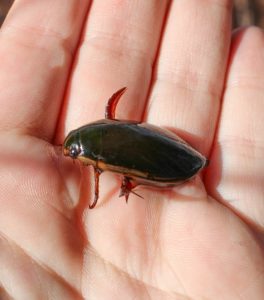
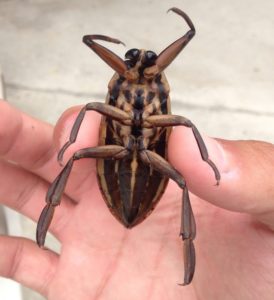 Sometimes called “Toe-biters”,
Sometimes called “Toe-biters”, 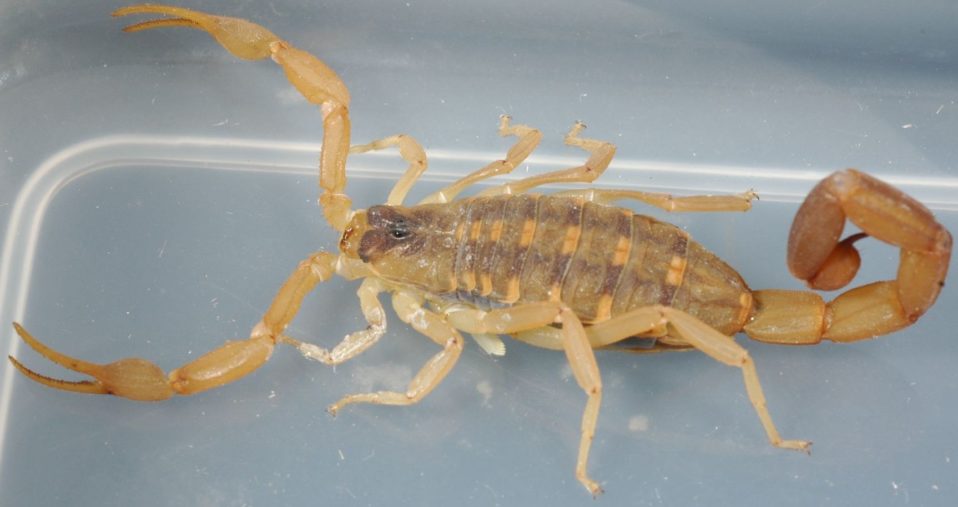
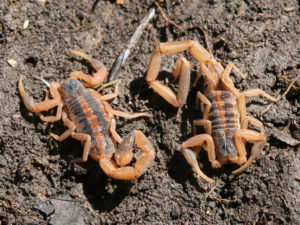 One of the most commonly encountered non-spider arachnids in this part of the state is the Striped Bark Scorpion (Centrutoides vittatus). This is a small scorpion, growing to only about 2.75 inches in total length. They may deliver a painful sting, though the venom is not usually injurious to humans, beyond the obvious pain and discomfort. As with all other scorpions, this species is carnivorous, seizing their prey with front pinching claws, and injecting the prey with venom from the tail stinger. They then spit out digestive juices onto the prey, and suck up the dissolving body of the prey. Maybe a bit gross, but its what they do!
One of the most commonly encountered non-spider arachnids in this part of the state is the Striped Bark Scorpion (Centrutoides vittatus). This is a small scorpion, growing to only about 2.75 inches in total length. They may deliver a painful sting, though the venom is not usually injurious to humans, beyond the obvious pain and discomfort. As with all other scorpions, this species is carnivorous, seizing their prey with front pinching claws, and injecting the prey with venom from the tail stinger. They then spit out digestive juices onto the prey, and suck up the dissolving body of the prey. Maybe a bit gross, but its what they do!
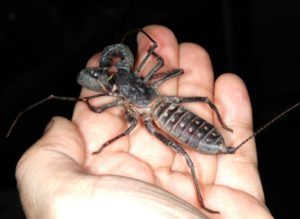 he 3rd animal we’ll look at this week is from a much lesser known group of arachnids called the “whip scorpions”, and here in the U.S. we call them Vinegaroons (
he 3rd animal we’ll look at this week is from a much lesser known group of arachnids called the “whip scorpions”, and here in the U.S. we call them Vinegaroons (


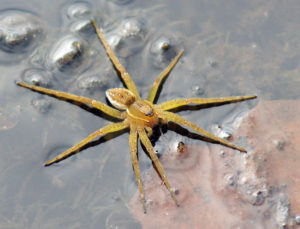 A really awesome spider, found only in the Cypress Pond at the South End of the park, is the Six-spotted Fishing Spider (Dolomedes triton), which is known for running across the surface of the water. These large leggy water walkers prey on a wide variety of aquatic creatures, like: minnows, tadpoles, aquatic insects, and even other spiders!
A really awesome spider, found only in the Cypress Pond at the South End of the park, is the Six-spotted Fishing Spider (Dolomedes triton), which is known for running across the surface of the water. These large leggy water walkers prey on a wide variety of aquatic creatures, like: minnows, tadpoles, aquatic insects, and even other spiders!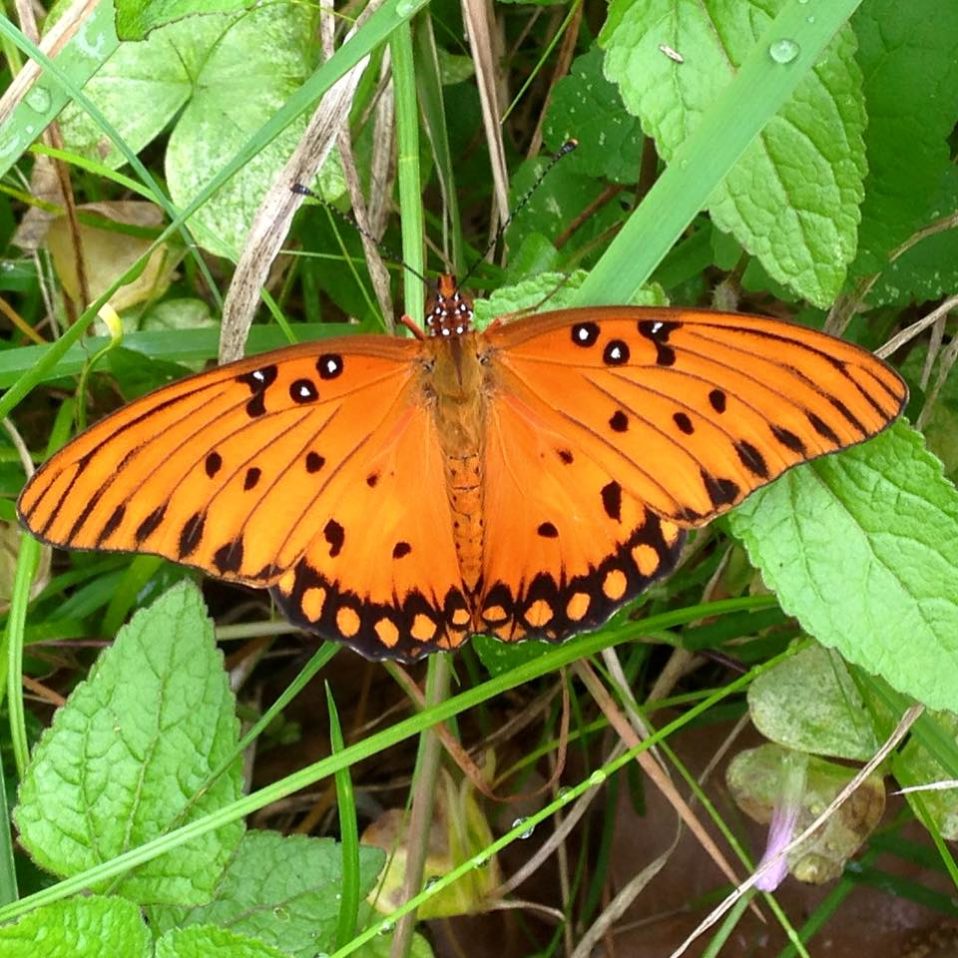
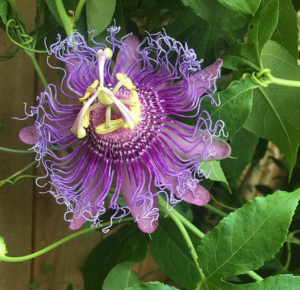 one of our most common butterflies in the park. Not actually related to other fritillaries, these butterflies are actually a kind of longwing or Heliconian butterfly. While the adults will feed on nectar from a variety of flower species, the larvae (caterpillars) will only feed on passionvines (Passiflora spp., Left photo). Passionvine leaves are toxic, and in turn the caterpillars are toxic, as are the adults. The bright orange and black coloration acts as a warning. Gulf Fritillaries have a wingspan of about 3.5 inches.
one of our most common butterflies in the park. Not actually related to other fritillaries, these butterflies are actually a kind of longwing or Heliconian butterfly. While the adults will feed on nectar from a variety of flower species, the larvae (caterpillars) will only feed on passionvines (Passiflora spp., Left photo). Passionvine leaves are toxic, and in turn the caterpillars are toxic, as are the adults. The bright orange and black coloration acts as a warning. Gulf Fritillaries have a wingspan of about 3.5 inches.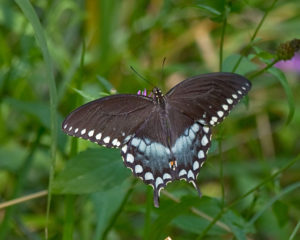
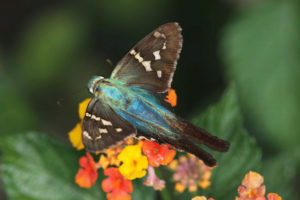
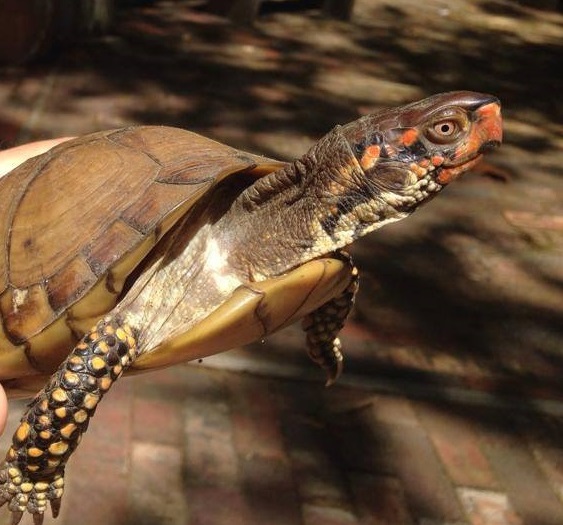
 The Three-toed Box Turtle (Terrapene triunguis) is our most common species of turtle, and is therefore the one you’re most likely to see. As with most box turtle species, they’re terrestrial, and tend to be associated with forested and semi-forested habitats. They are rather omnivorous, feeding on a wide variety of mushrooms, berries, flowers, insects and other small invertebrates. Also like other box turtles, their lower shell (the plastron) is hinged, which allows them to pull inside their shell and then close it up tightly. Three-toed Box Turtles usually have a caramel colored shell, which may have darker markings as well, and the males will will have various colorful markings around the face and legs. Males are larger and have reddish eyes, and the females have yellowish eyes.
The Three-toed Box Turtle (Terrapene triunguis) is our most common species of turtle, and is therefore the one you’re most likely to see. As with most box turtle species, they’re terrestrial, and tend to be associated with forested and semi-forested habitats. They are rather omnivorous, feeding on a wide variety of mushrooms, berries, flowers, insects and other small invertebrates. Also like other box turtles, their lower shell (the plastron) is hinged, which allows them to pull inside their shell and then close it up tightly. Three-toed Box Turtles usually have a caramel colored shell, which may have darker markings as well, and the males will will have various colorful markings around the face and legs. Males are larger and have reddish eyes, and the females have yellowish eyes.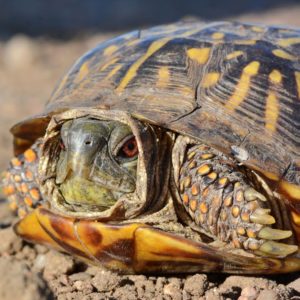
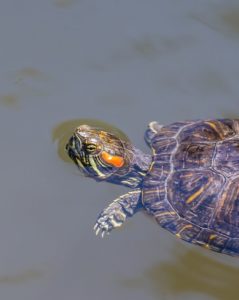 The only species of aquatic turtle that lives in our park is the Red-eared Slider (Trachemys scripta elegans), which is also one of the most commonly encountered aquatic turtles in the Houston area. This is one of the “basking turtles”, aquatic turtles in the family Emydidae that are often seen basking in the sunshine on pond banks, rocks, and logs. Sliders are ominvorous turtles, but start out their lives as primarily carnivorous, and shift to a more plant based diet as they grow older. Despite the name, the red marks on the sides of their heads do not correspond exactly with the location of the ears. While the shells of the juveniles may be elaborately marked with yellow and green lines, the patterns fade away (eventually to black or dark gray), as they mature. Older individuals may even lose all markings and become totally black (a color condition called “advanced melanism”).
The only species of aquatic turtle that lives in our park is the Red-eared Slider (Trachemys scripta elegans), which is also one of the most commonly encountered aquatic turtles in the Houston area. This is one of the “basking turtles”, aquatic turtles in the family Emydidae that are often seen basking in the sunshine on pond banks, rocks, and logs. Sliders are ominvorous turtles, but start out their lives as primarily carnivorous, and shift to a more plant based diet as they grow older. Despite the name, the red marks on the sides of their heads do not correspond exactly with the location of the ears. While the shells of the juveniles may be elaborately marked with yellow and green lines, the patterns fade away (eventually to black or dark gray), as they mature. Older individuals may even lose all markings and become totally black (a color condition called “advanced melanism”).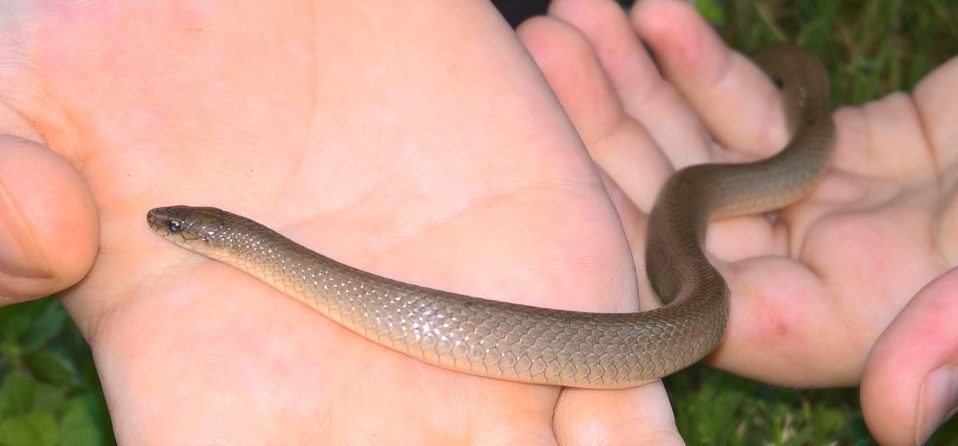
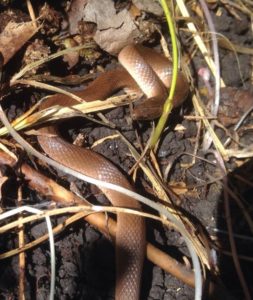
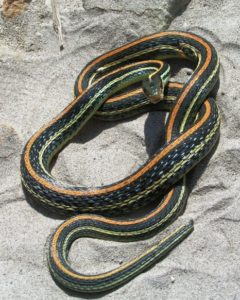
 The Eastern Hognose (Heterodon platyrhinos) is one of the few creatures that can eat toads (with their toxic skin). Hognoses are (mildly) rear-fanged venomous, and use those fangs in the rear of their mouths to pop the toads which they eat (toads inflate themselves with air to keep from being swallowed). These snakes are known for spreading their hoods, like a small cobra, and hissing loudly when threatened. If that doesn’t drive away a potential predator, they flip over and play dead (even letting their tongue hang out and emitting a foul death like odor).
The Eastern Hognose (Heterodon platyrhinos) is one of the few creatures that can eat toads (with their toxic skin). Hognoses are (mildly) rear-fanged venomous, and use those fangs in the rear of their mouths to pop the toads which they eat (toads inflate themselves with air to keep from being swallowed). These snakes are known for spreading their hoods, like a small cobra, and hissing loudly when threatened. If that doesn’t drive away a potential predator, they flip over and play dead (even letting their tongue hang out and emitting a foul death like odor).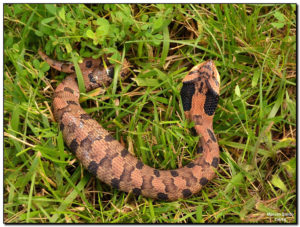
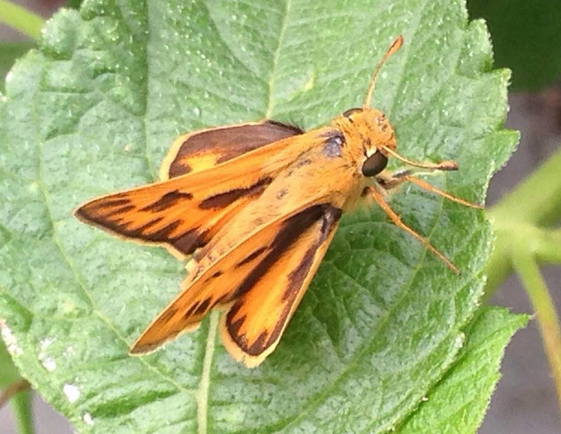
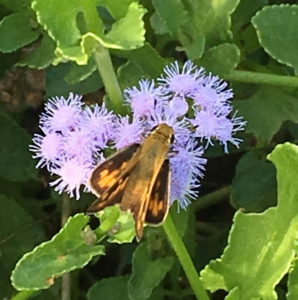
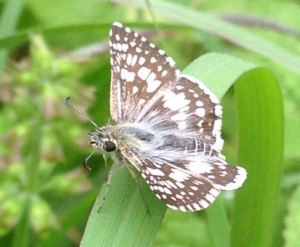
 enal’s Duskywing (Erynnis juvenalis) is one of 2 species of Duskywing (dark colored skippers that keep their wings open and flattened when on a perch), found in our park. The other is the very similar Horace’s Duskywing, though there are many other species of Duskywing across the country. The caterpillars of these skippers feed on oak leaves. They are similar in size to the Checkered skippers, ~3.8 cm wingspan. Duskywings can make themselves rather conspicuous with their darting, climbing, and diving flight patterns, and their habit of sunning out in flat open meadows in plain sight.
enal’s Duskywing (Erynnis juvenalis) is one of 2 species of Duskywing (dark colored skippers that keep their wings open and flattened when on a perch), found in our park. The other is the very similar Horace’s Duskywing, though there are many other species of Duskywing across the country. The caterpillars of these skippers feed on oak leaves. They are similar in size to the Checkered skippers, ~3.8 cm wingspan. Duskywings can make themselves rather conspicuous with their darting, climbing, and diving flight patterns, and their habit of sunning out in flat open meadows in plain sight.